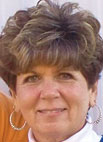
When a visitor pulls in to the Taylor Hawk Farms driveway, they might think they were in the midst of Scotland, with the steep hills and pastures, beautiful trees and mountains that surround a picturesque home with barns and working pens.
Jacque (Taylor) Hawkins raises Scottish Northern Highland cattle at Hawk Farms near Deer, Ark. Highland cattle are the oldest registered breed of cattle with the first herd book being established in 1884 in Scotland and England.
Like her Highland cattle, Jacque’s roots run deep in agriculture.
“My great-grandfather and grandmother homesteaded Taylor Point in 1854, in fact they lived on Taylor Point,” Jacque said. “I am sixth or seventh generation of the Taylors.”
According to the Livestock Conservatory, the shaggy haired, long horned Highland descends from the native cattle of Scotland and is named for the Highland region.
Highland cattle were first imported to North America in the 1880s, and importations continued throughout the 1900s.
The popularity and novelty of Highland cattle is beginning to grow, and people are starting to take notice of the unique breed and its attributes.
“These cattle are foragers very hearty. They are like goats in the way that they eat all grasses, thistles, thorns, grapevines; they will even pull a sapling down with their horns and eat it.
“The rougher the terrain is the better it is because their hooves grow fast, and you don’t have to get a farrier out to trim feet. They also take the heat very well,” said Jacque. The long horns of the Highland cattle dissipate a heat, and shed in the spring, which helps keep the long-haried cattle cooler.
“I chose these cattle because they take very little maintenance,” Jacque said. “They are disease-resistant, as well. We put out a mineral bucket with selenium in it because Arkansas soil is lacking in selenium. I also give one, triple seven shot at 5 months old. I band my steers and we do treat for lice and flies, which everyone does. I site wean because that keeps the stress down. I also keep a closed herd so I can help keep my disease down.”
Jacque added that the Highlands are very protective of their herd, the predators “don’t have a chance.”
The Highlands are a very docile breed.
“They will not get out of the fence,” Jacque said. “They are very laid-back cattle. Also we handle the young ones as soon as possible, and we use cubes as a treat to feed to them to make them get used to us handling them. If they don’t recognize you they might be a little defensive.”
Because of the long, double hair of the Highland, the breed does not have layer of backfat of insulation to protect them from the cold. The absence of the fat layer allows the breed to marble naturally on low input forage while producing lean, low fat, high quality cuts of beef.
Highlands also shed out earlier in the spring and produce less hair in a warmer climate, making them suitable for a variety of environments.
Highlands are also a slow maturing breed, which Jacque said adds to the quality of Highland beef, as well as their longevity.
“It takes the Highlands two years to come to maturity, but it is well worth the wait,” she said. “Even though they are smaller cattle, their meat is well marbled and has great flavor; you cook them slow and low. I have a mature bull that weighs 2,000 pounds, and I have a cow that is 18 years old and is still producing great calves. They live to be 20 and still produce nice calves.”
Jacque added that they do have a rotational grazing system established, but purely so they can cut and bale their own hay.







